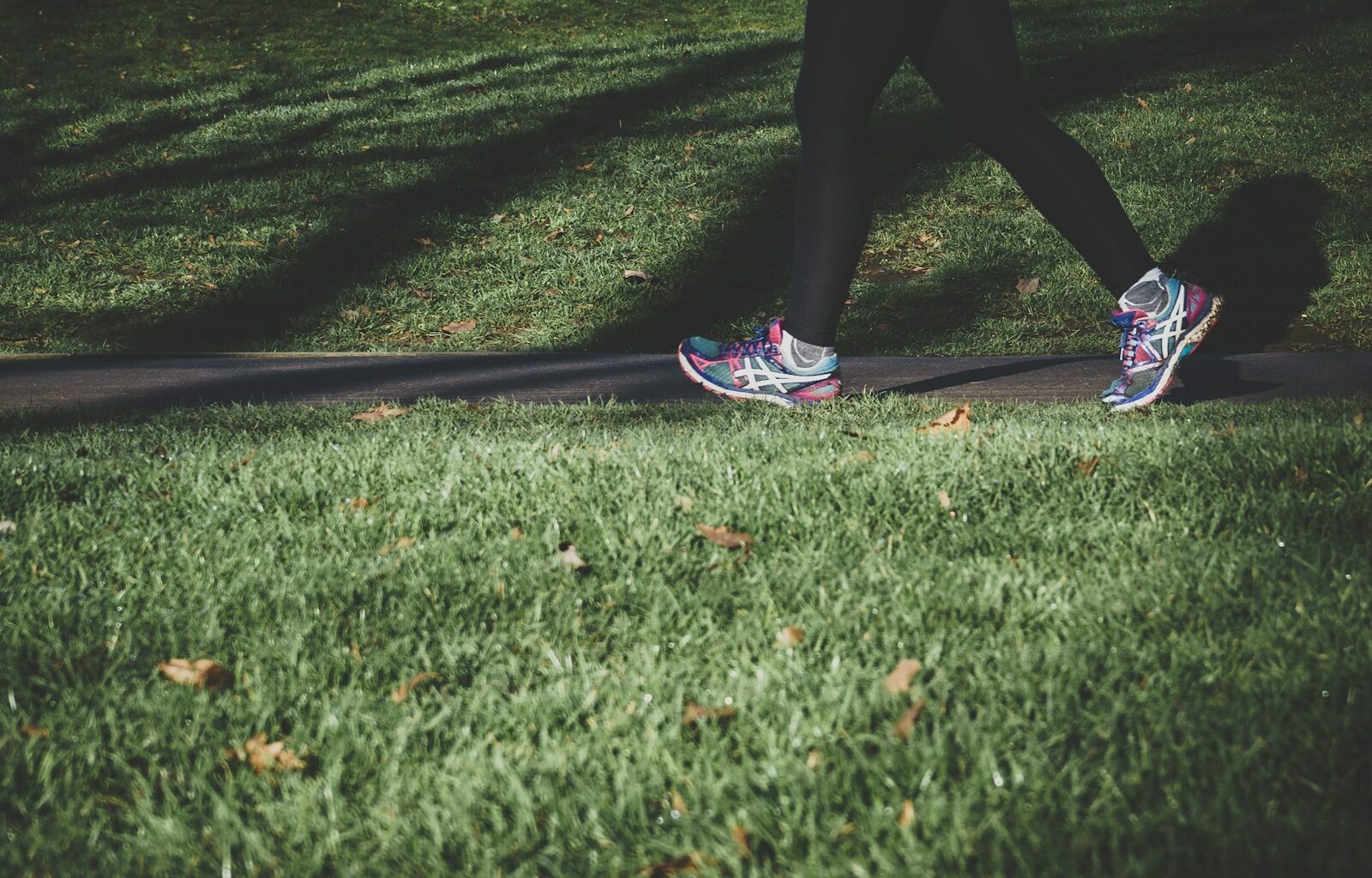Daily walking provides superior long-term health benefits compared to sporadic gym workouts through consistent cardiovascular exercise, sustainable habit formation, and lower injury risk.
Research from the University of Massachusetts shows that people who walk 7,000+ steps daily have 50-70% lower all-cause mortality risk, while achieving better long-term fitness outcomes and higher exercise adherence rates (78%) compared to gym members (23% annual retention).
1. Cardiovascular Health and Disease Prevention
1.1 Consistent Aerobic Activity Benefits
Walking provides steady-state cardiovascular exercise that strengthens the heart, improves circulation, and reduces blood pressure more effectively than intermittent high-intensity gym sessions. Daily moderate activity creates sustained adaptations that sporadic intense exercise cannot match.
1.2 Blood Sugar Regulation and Metabolic Health
Regular walking improves insulin sensitivity and glucose metabolism throughout the day, with post-meal walks reducing blood sugar spikes by 30%. This consistent metabolic benefit exceeds what brief gym sessions provide for diabetes prevention and management.
1.3 Inflammation Reduction and Immune Function
Daily walking reduces chronic inflammation markers and strengthens immune function through consistent moderate stress that promotes adaptation without overwhelming recovery capacity. Regular walkers show 43% lower risk of respiratory infections.
1.4 Cholesterol and Lipid Profile Improvements
Walking 7,000+ steps daily improves HDL cholesterol, reduces triglycerides, and enhances overall lipid profiles more consistently than irregular gym attendance. The steady-state exercise provides sustained metabolic benefits for cardiovascular health.
2. Mental Health and Cognitive Benefits
2.1 Stress Reduction and Cortisol Regulation
Walking naturally reduces cortisol levels and activates parasympathetic nervous system responses that counteract daily stress. The rhythmic nature of walking creates meditative benefits that gym workouts often lack due to intensity and time pressure.
2.2 Mood Enhancement and Depression Prevention
Daily walking increases endorphin production and serotonin availability that improve mood stability and reduce depression risk by 25%. The outdoor exposure and natural light enhance these benefits beyond indoor gym activities.
2.3 Cognitive Function and Brain Health
Walking improves blood flow to the brain, stimulates neuroplasticity, and supports memory formation through BDNF (brain-derived neurotrophic factor) production. Regular walkers show better cognitive aging and reduced dementia risk.
2.4 Sleep Quality and Circadian Rhythm Support
Daily walking, especially morning walks, helps regulate circadian rhythms and improve sleep quality through natural light exposure and physical activity that doesn’t overstimulate the nervous system like intense gym workouts can.
3. Accessibility and Sustainability Advantages
3.1 Zero Cost and Equipment Requirements
Walking requires no gym memberships, equipment purchases, or ongoing fees while providing comprehensive health benefits. This removes financial barriers that prevent many people from maintaining regular exercise routines.
3.2 Time Efficiency and Schedule Integration
Walking integrates into daily routines through commuting, errands, or lunch breaks without requiring separate time blocks for gym visits. This integration increases adherence and reduces scheduling barriers that sabotage fitness routines.
3.3 Location Independence and Travel Compatibility
Walking works anywhere without facility access, making it sustainable during travel, schedule changes, or life transitions that disrupt gym routines. This consistency maintains fitness benefits throughout life changes.
3.4 Weather Adaptability and Indoor Alternatives
Walking adapts to weather conditions through indoor malls, treadmills, or covered areas while maintaining routine consistency. Multiple options prevent weather from disrupting exercise habits like outdoor gym commutes might.
4. Injury Prevention and Joint Health
4.1 Low-Impact Movement and Joint Preservation
Walking provides joint-friendly exercise that strengthens supporting muscles without high-impact stress that causes wear and injury. This sustainability enables decades of consistent activity without accumulated damage.
4.2 Natural Movement Patterns and Functional Strength
Walking reinforces natural movement patterns used in daily activities while strengthening stabilizing muscles that prevent falls and injuries. This functional fitness transfers directly to life activities unlike some gym exercises.
4.3 Gradual Progression and Adaptation
Walking allows natural progression in distance, pace, or terrain that accommodates fitness improvements without forcing rapid advancement that causes injury or burnout common in gym environments.
4.4 Recovery and Active Rest Benefits
Walking serves as active recovery that promotes circulation and healing without adding stress that interferes with recovery from other activities or life stressors that require physical resilience.
5. Social and Community Benefits
5.1 Family and Friend Integration
Walking accommodates multiple fitness levels and ages, enabling family exercise and social connections that gym workouts often cannot provide. This social support increases adherence and enjoyment.
5.2 Community Connection and Neighborhood Exploration
Walking connects people with their neighborhoods, local businesses, and community members while providing exercise benefits. This social connection enhances mental health beyond pure physical activity.
5.3 Pet and Lifestyle Integration
Dog walking or family walks serve multiple purposes while providing exercise benefits, making efficient use of time while strengthening relationships and meeting pet care responsibilities.
5.4 Group Activities and Social Support
Walking groups provide social accountability and motivation without the intimidation or comparison issues that gym environments can create for some individuals.
6. Long-Term Adherence and Habit Formation
6.1 Simplicity and Decision Fatigue Reduction
Walking requires minimal decision-making about equipment, routines, or facility access, reducing barriers that prevent consistent exercise. Simple habits form more reliably than complex gym routines.
6.2 Immediate Benefits and Positive Reinforcement
Walking provides immediate mood and energy benefits that reinforce the behavior, while gym workouts may initially cause fatigue or soreness that discourages beginners from continuing.
6.3 Age-Appropriate and Lifelong Activity
Walking remains appropriate and beneficial throughout aging while gym activities may become unsuitable due to physical limitations, making walking the most sustainable long-term exercise choice.
6.4 Habit Stacking and Routine Integration
Walking easily combines with other daily activities like phone calls, podcasts, or commuting, creating habit stacks that reinforce consistency while maximizing time efficiency.
7. Optimizing Walking for Maximum Benefits
7.1 Pace and Intensity Variations
Include varied paces from leisurely to brisk walking that challenges cardiovascular fitness while remaining sustainable. Hill walking or incline variations add strength benefits without requiring equipment.
7.2 Route Planning and Environmental Benefits
Choose routes with natural scenery, varying terrain, or points of interest that enhance enjoyment and provide additional mental health benefits through nature exposure and environmental variety.
7.3 Tracking and Progress Monitoring
Use step counters, apps, or simple logs to monitor progress and maintain motivation through visible improvement in distance, pace, or consistency rather than complex gym metrics.
7.4 Seasonal Adaptations and Year-Round Consistency
Plan seasonal variations in routes, timing, or indoor alternatives that maintain consistency throughout weather changes while preventing boredom through environmental variety.
Conclusion
Walking 7,000 steps daily provides comprehensive health benefits that exceed sporadic gym attendance through consistency, accessibility, and natural movement patterns that support long-term wellness.
The key advantages lie in sustainability, cost-effectiveness, and integration with daily life that enable decades of consistent activity. While gym workouts have their place for specific fitness goals, walking provides the foundation of health that benefits everyone regardless of age, fitness level, or circumstances.
Focus on consistency over intensity, integrate walking into daily routines, and appreciate the simple but profound health benefits of regular movement. Your long-term health depends more on daily consistency than occasional intensity—make walking the cornerstone of your fitness strategy.











